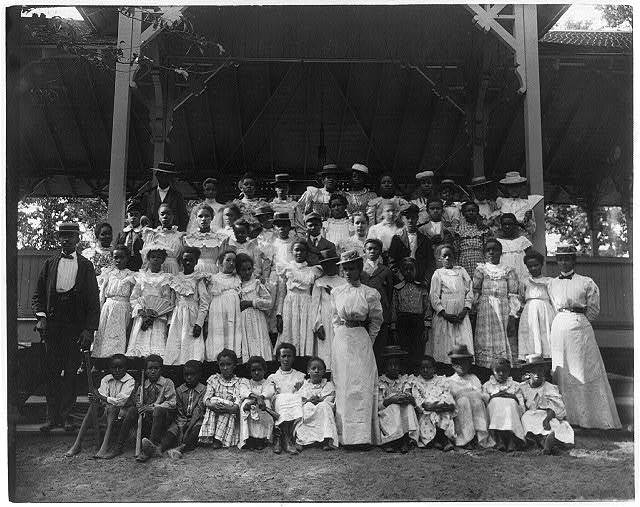Reconstruction-era African Americans created thousands of mutual aid groups, such as burial societies, debating clubs, drama societies, and trade associations.[34] The establishment of these groups constituted a form of direct action; in each case communities decided to directly and collectively improve their own lives. In Atlanta, blacks pooled together funds and built a hospital.[35] Eric Foner writes that these groups offered blacks “social fellowship, sickness and funeral benefits, and, most of all, a chance to manage their own affairs.”[36] Often, mutual aid did not require formal organization; people simply helped out their friends and family. Writing from Milton, Florida in 1867, Dave Waldrop offered to take care of his cousin Sarah and her children. “Dear cousin, I received word last week that you wer not doing very well in Montgomery and that times wer very hard there,” the letter began.[37]
In the urban South, black women wage workers quit demeaning jobs, stole table scraps, stole breaks, feigned illnesses, went on strike, and formed cooperative networks encompassing “neighborhoods, families, churches, mutual aid organizations, dance halls, and vaudeville theaters.”[38] In Atlanta, female workers quit jobs that paid too little or had too many hours. Quitting, the historian Tera Hunter observes, “was an effective strategy to deprive employers of complete power over their labor.”[39] In other cases, strikes were larger and more coordinated. In Jackson in 1866, black female laundry workers went on strike, demanding a higher wage. The outcome of the strike is unknown. The same year, in Galveston, black women went on strike against unfair pay and confinement to household work. It is unclear how many strikers achieved their demands by the time the strike faded out.[40]
Source: Anarchy in Action
